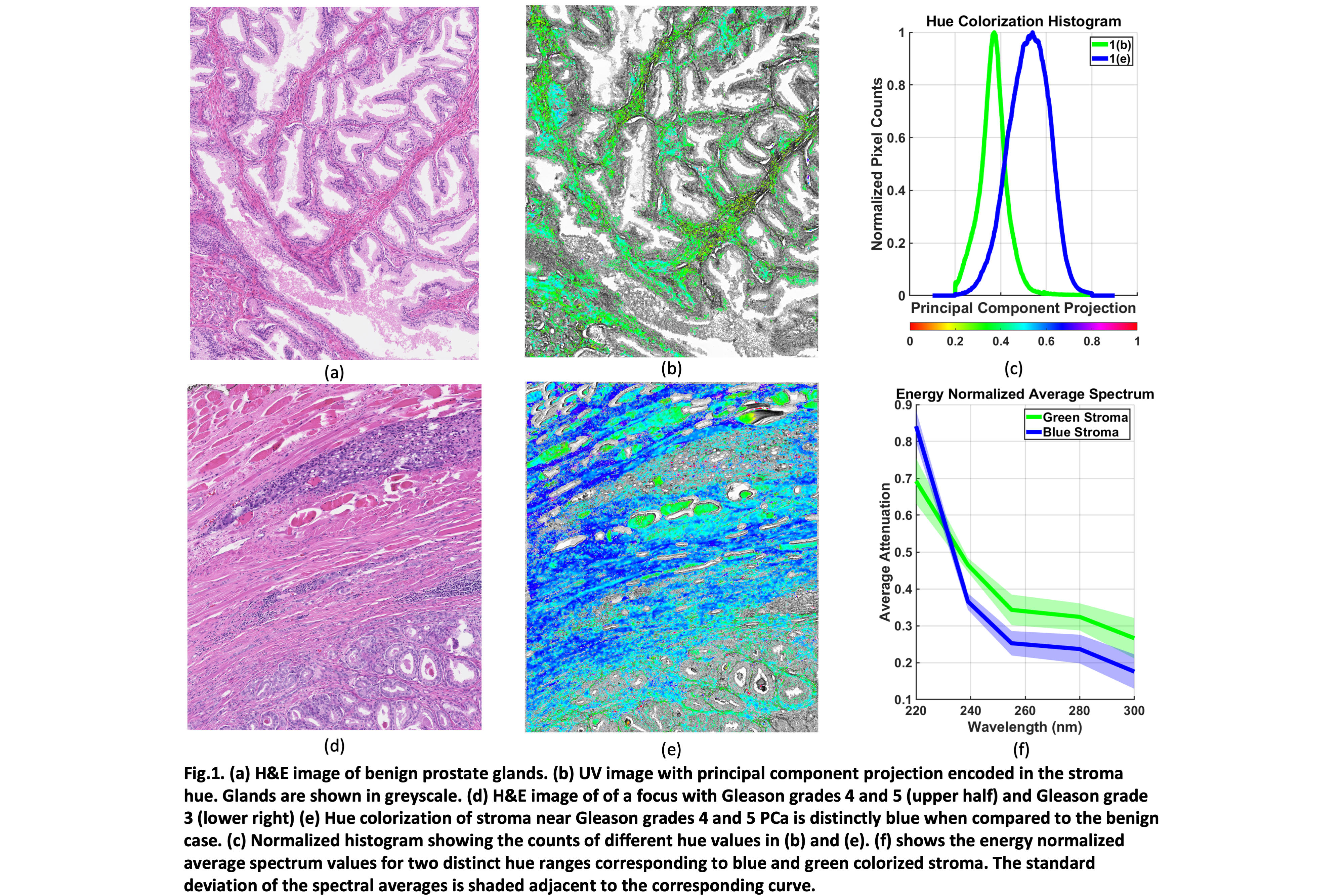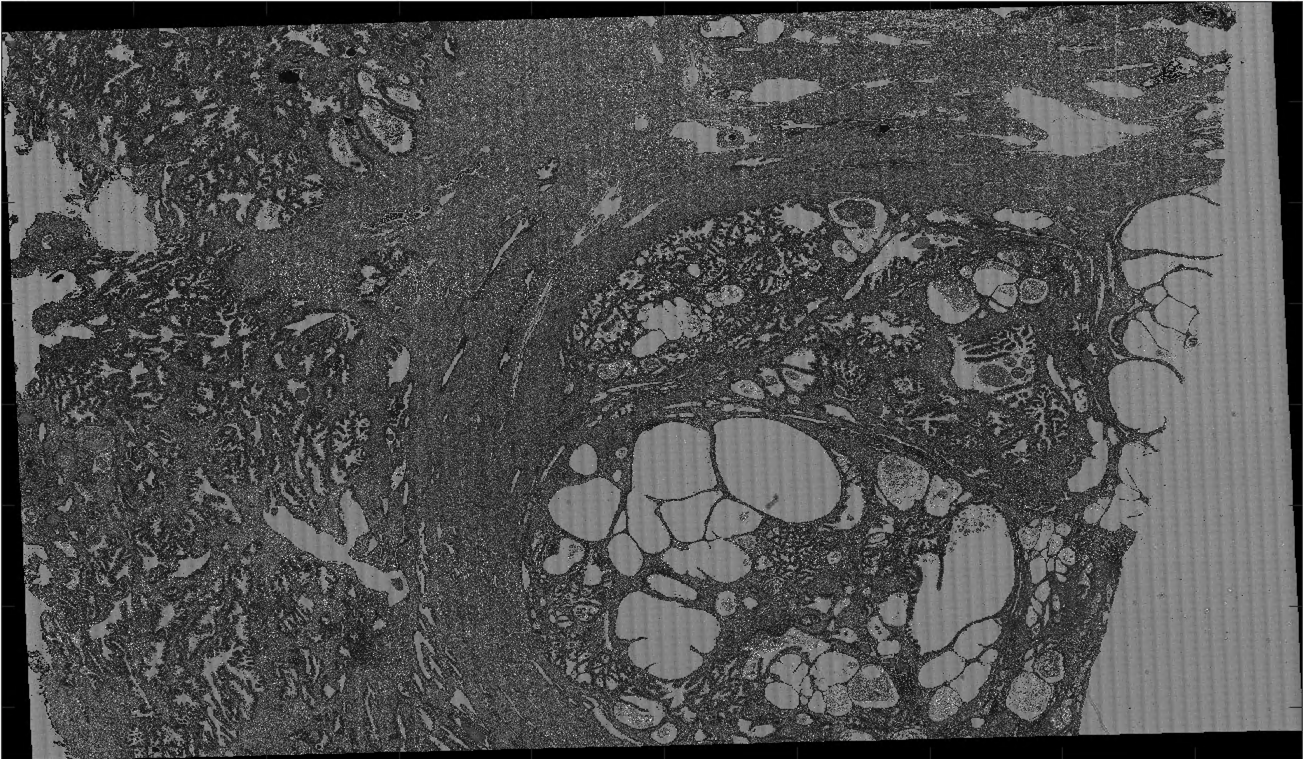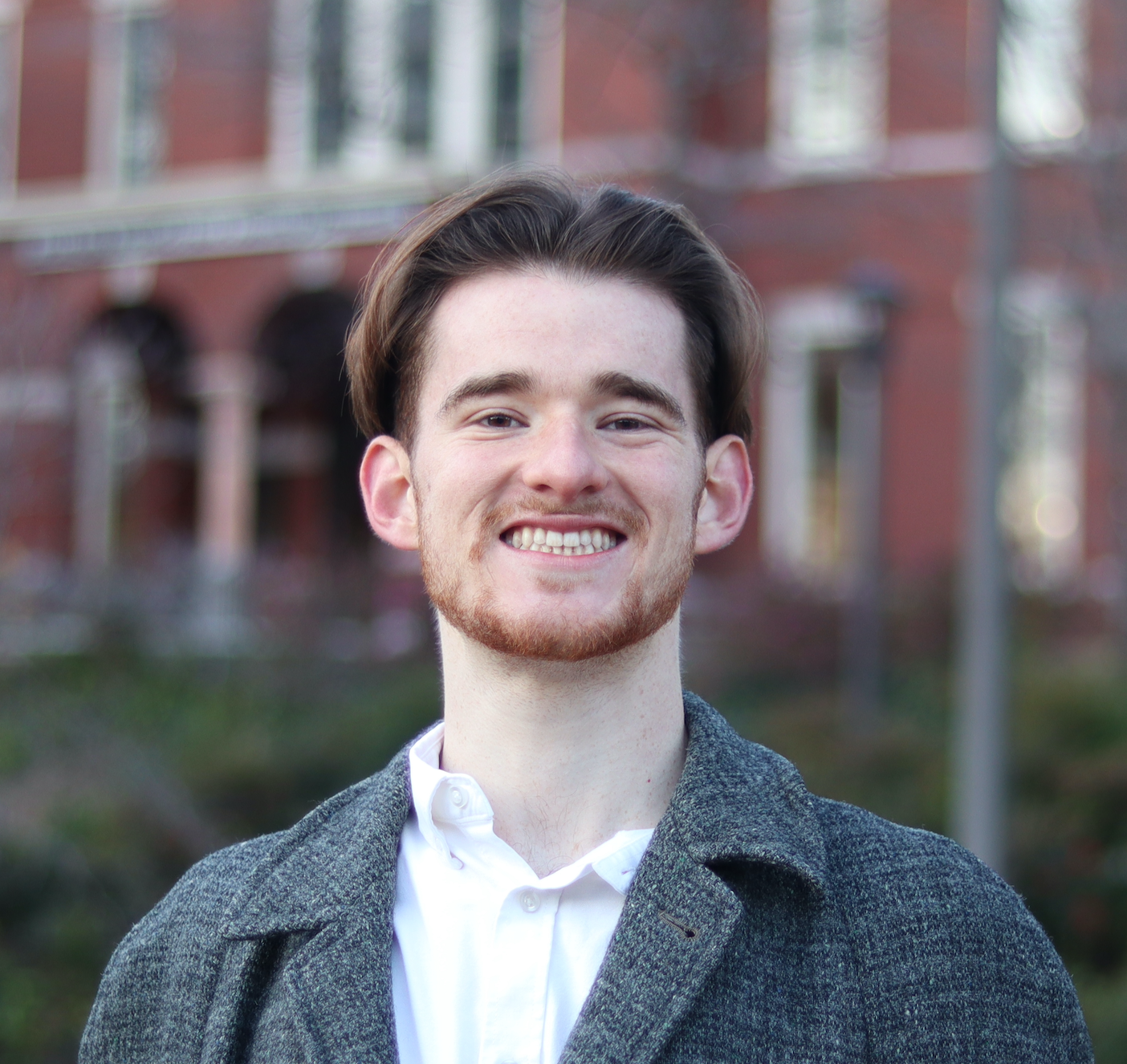Optical Imaging and Spectroscopy Research
UV Microscopy for Prostate Cancer
Prostate Cancer (PCa) is routinely diagnosed using glandular morphological analysis on H&E slides. However, emerging methods are increasingly showing the utility of other tissue properties, including the prostatic stroma, as powerful complementary signatures of disease. The prostatic stromal tissue is a complex microenvironment with several growth factors and signaling pathways mediating the host’s response to PCa invasion. Here we apply deep UV microscopy for label-free quantitative molecular analysis of the prostatic stroma in patients with PCa and adjacent benign glands.

I created a whole slide imaging automation system for the aforementioned UV microscope. This involved writing the drivers to communicate with motor controllers, creating an autofocus algorithm, and designing scanning automation code. Below is an example image that covers a whole radical prostatectomy slide. (resolution decreased to load quickly)

Systems Research
In the Georgia Tech Systems Research Lab, I worked under Dr. Fumin Zhang and Dr. Said Al-Abri on novel solutions to multi-agent robotics tracking problems. The primary strategy employed in these projects was called SUSD, or Speed Up Slow Down. Before I worked independently in the lab, I worked with other groups of students on a VIP Team to implement algorithms for level curve tracking, source seeking, and dynamic target following on the GT-MAB , a robotic inflatable blimp platform. After realizing that more accuracy was needed due to the varying dynamics of the blimp environment (wind), I left the VIP team to work independently on a more reliable solution. In order to do this, I learned about the Robotarium Platform and started experimenting with increasing numbers of agents and more complex control laws. One challenge I had was keeping the swarm together while turning the group of agents due to the much larger distance traveled by the outermost agents. Finally, I arrived at the code used for the final experiment. I was very grateful for the opportunity to write about this work in a confrence paper with Said Al-Abri and Tony Lin, and my favorite part of this research was understanding the math used such as the Covariance Matrix. The video of the final result can be seen on the left at the 1:00 mark. I also worked on 3D simulations in MATLAB which are pictured in the video.
